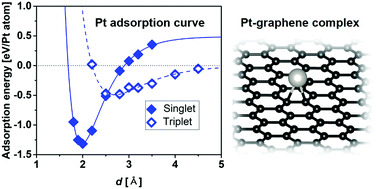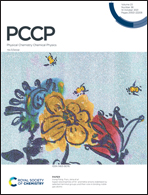Adsorption of a single Pt atom on graphene: spin crossing between physisorbed triplet and chemisorbed singlet states
Abstract
Diffusion Monte Carlo (DMC) calculations have been performed to study the adsorption of a single Pt atom on pristine graphene. We obtain the adsorption energy curves of a single Pt atom adsorbed at three different adsorption sites (bridge, on-top, hollow) as functions of the vertical distance from a graphene surface for both spin singlet and triplet states. The bridge-site adsorption in a singlet spin state is found to be energetically most stable, which is consistent with previous theoretical predictions. As the Pt atom moves away from a graphene surface, spin triplet states are favored over spin singlet states for all three adsorption sites, reflecting that the ground state of an isolated Pt atom is in a spin triplet state. Furthermore, our DMC calculations reveal local-minimum features in the triplet region which is understood to be due to van der Waals interaction between the Pt atom and graphene. This provides a comprehensive understanding for a spin crossing from a physisorbed triplet state to a chemisorbed singlet state in the adsorption process of a single Pt atom on graphene.



 Please wait while we load your content...
Please wait while we load your content...
